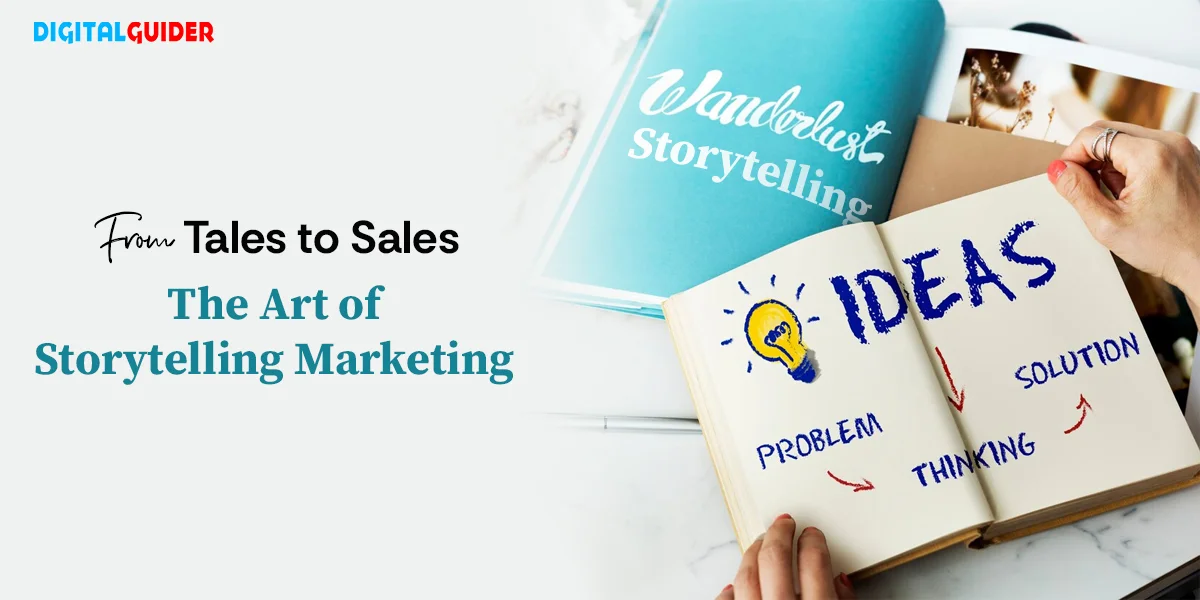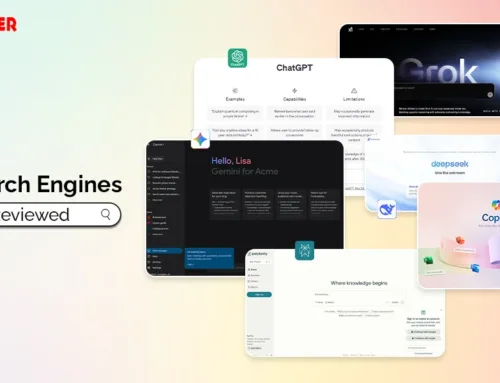Imagine a coffee brand that doesn’t just sell beans but tells the story of the farmers behind each blend.
Or a tech company that shares how its products empower communities.
Similarly, storytelling isn’t just entertainment; it’s a tool for connecting and engaging.
In this ultimate guide, let us learn about Storytelling Marketing in depth.
What is Storytelling in Marketing?
Storytelling is the art of narrative techniques that provide a brand’s message to the consumers. Here, “Brand’s message” means that the story will create a different world in the reader’s or listeners’ minds and lead to brand awareness.
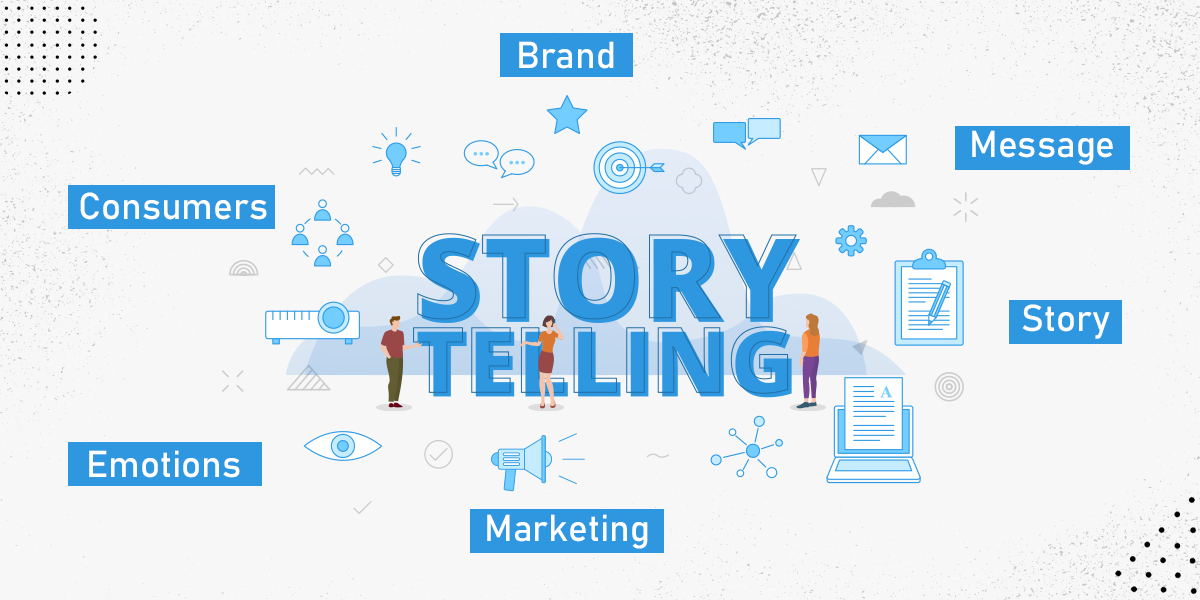
Stories can be of any genre, such as emotional, thriller, or full of plot twists, that can leave an impact on the viewers’ minds and will create a positive image of the business.
Let me share some secrets on how storytelling in marketing grabs your attention.
The Psychology Behind Storytelling Marketing
Did you know that storytelling involves some important aspects that influence the minds of viewers? It is not an ad or a campaign; it is a journey affecting the minds to create an impact on viewers.
Let us go through the mindset behind Storytelling Marketing –
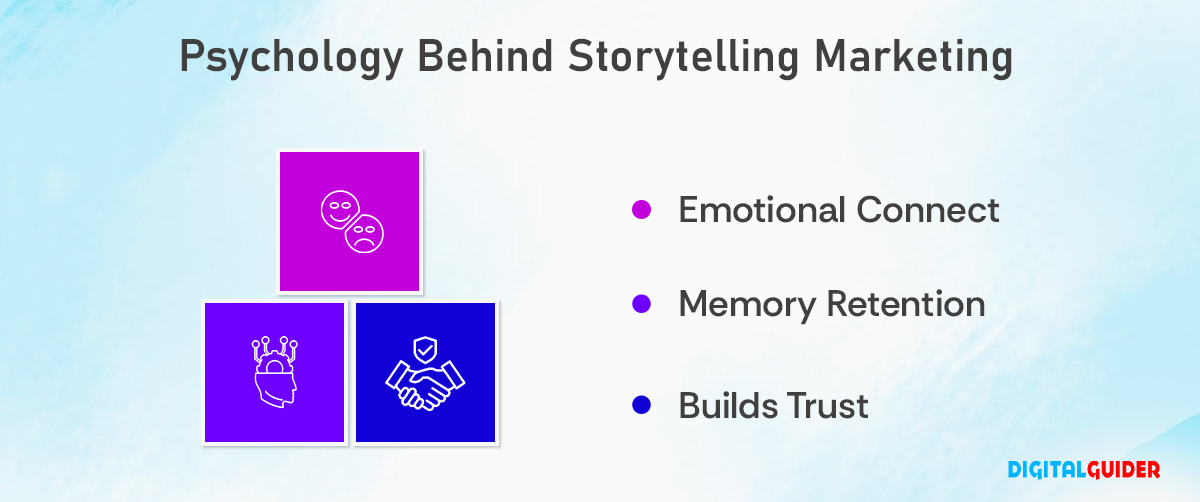
1. Emotional Connect
Humans are full of emotions that can overpower the mind to make decisions based on emotions. That’s why brands choose content marketing storytelling to increase leads and sales through heartfelt and relatable stories.
Sometimes the stories are made up. But still, those ad campaigns generate a space in our minds for a long time. This is called brand awareness.
2. Memory Retention
Imagine two scenarios; in the first one, you saw an ad in a magazine about a famous makeup brand.
In the second scenario, you came across a video ad for the same makeup brand on Instagram. It involved an emotional story about how affordable makeup products help build someone’s confidence.
Now, which scenario will stay in your mind for a long time?
Surely, the second one! As it is easier to remember and recall the appealing visuals and engaging stories than the facts and statistics.
3. Builds Trust
As we open social media, we see a lot of reels of the CEOs of brands sharing the journey of how the brand started, faced challenges, and then started becoming successful. Similarly, the emotional connection leads to trust and loyalty among customers.
Surely, your mind has come across all the brand-related stories you have heard or watched in a long time.
Have a look at some beneficial Storytelling Marketing Strategies to guide you through the art of Storytelling Marketing.
Storytelling Marketing Strategies
Creating an effective story requires deep strategic planning to avoid any issue or error in the output. Here are the Top 6 Storytelling Marketing Strategies that should be considered before crafting a story:
1. Build a Brand Story
Share your Brand Journey, how it started, what inspired you to start this business, and what problem you are solving. Always be authentic while sharing your story.
2. Customer is your Hero
Show how your product or services improved lives. Use genuine reviews, video feedback, and case studies to create a personal touch.
3. Focus on User-generated content
Encourage customers to share their stories related to your product and repost those stories to enhance trust and engagement.
4. Use emotions to build a connection
Emotions like joy, hope, or fear can be used well in the stories. For example, sharing how the product helped in achieving a dream.
5. Align Stories with Social Causes
Share stories with a commitment to social, environmental, or community causes.
6. Use Data to enhance stories
Combine storytelling with data to create a compelling and factual tale. For example, “We have helped 20,000 students to get the desired job.”
These Storytelling Marketing strategies provide the best output for Business growth. However, it is very important to measure the results of these strategies to know their effectiveness as well as their drawbacks.
How to Measure Your Storytelling Marketing Strategies?
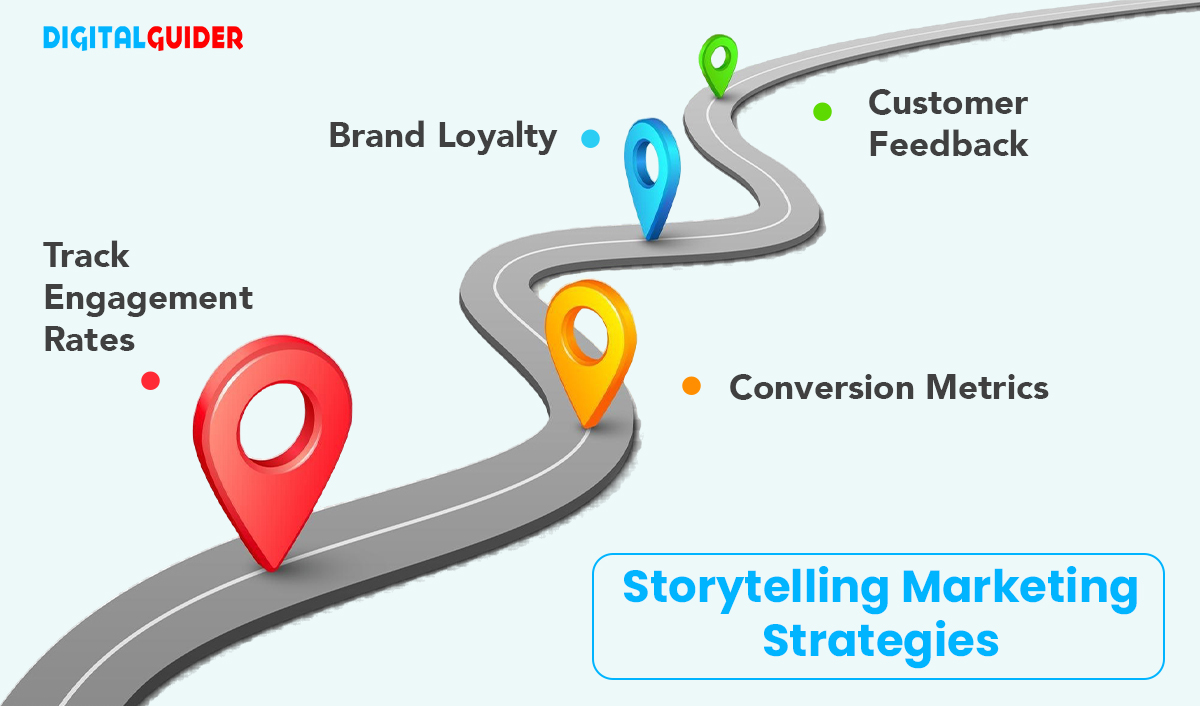
1. Track Engagement Rates
Measure engagement on social media networks and your website’s analytics to track audience engagement.
2. Conversion Metrics
Track conversion rates to measure the effectiveness of Content Marketing Storytelling.
3. Brand Loyalty
Measure the narrative’s impact on loyalty and customer connections using CRM systems and satisfaction surveys.
4. Customer Feedback
Surveys, polls, positive customer testimonials, and reviews show the effectiveness of your storytelling techniques.
—Tools to Measure Storytelling Marketing Strategies
#1. Google Analytics tracks website traffic, user behavior, and conversions related to your storytelling techniques.
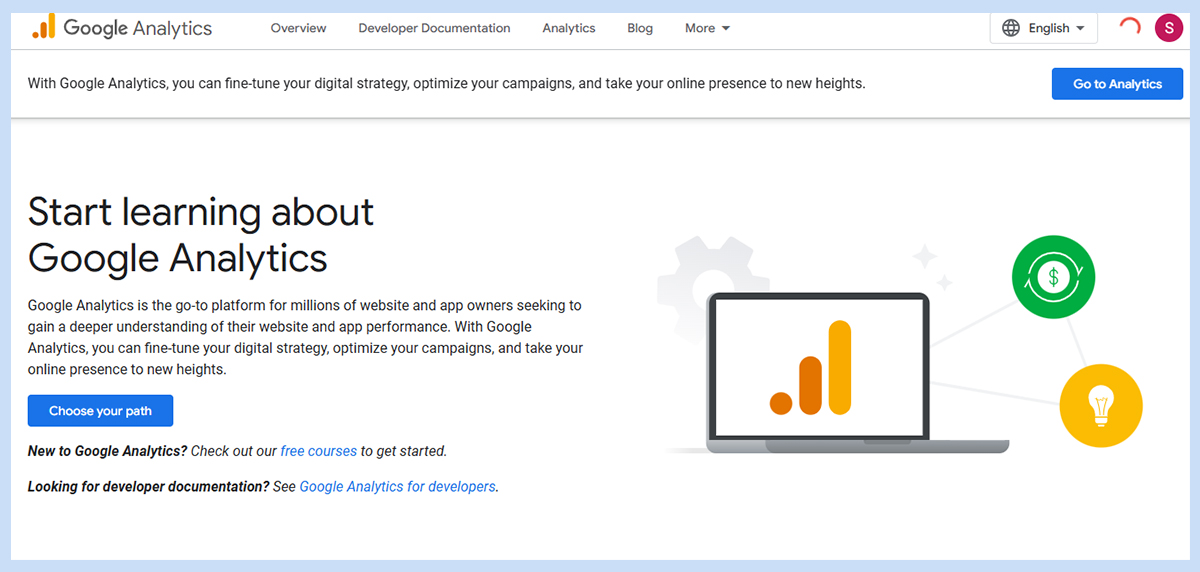
#2. Tools like Facebook Insights show data on engagement, reach, and audience demographics.
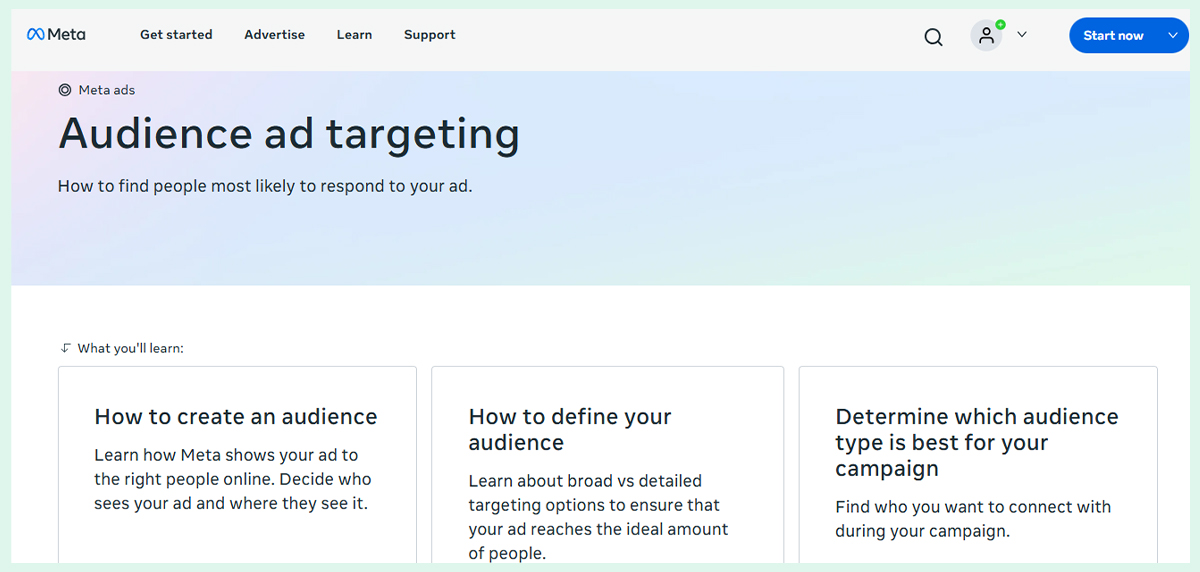
#3. Platforms like Salesforce or HubSpot help track customer interactions and measure the impact of storytelling in business.

#4. Another important tool is the Acceptance of Constructive criticism. If there is any customer feedback to improve any aspect of your work, always make sure to work on it.
Numerous brands follow this concept and strategy to beat the competitive market.
Let me give you a few more Storytelling Marketing Examples:
2. Dove’s “Real Beauty” campaign
Dove, a famous soap brand, challenged traditional beauty standards by featuring diverse women of different sizes, shapes, and ages.
The viral video “Real Beauty Sketches” focused on self-esteem and confidence. This storytelling marketing strategy was well-planned and created an emotional impact on the viewers.
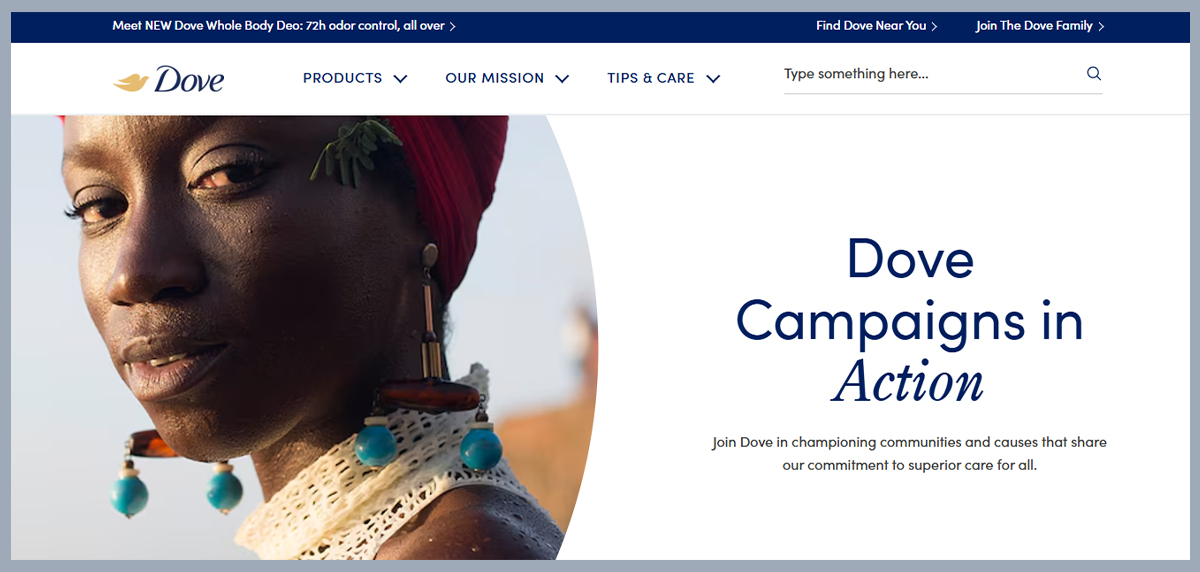
3. Airbnb’s “Belong Anywhere” campaign
Airbnb highlighted the importance of travel as a means of connection and community, emphasizing diversity and personal connections. Ads feature real people sharing their experiences, promoting Airbnb as a way to experience the world through human connection.

4. Apple’s “Shot on iPhone” campaign
Apple urged consumers to use the hashtag #ShotOniPhone when sharing images and videos captured with their iPhones. This user-generated content promoted a sense of connection while showcasing the quality of the camera. It is one of the famous Storytelling Marketing Examples.
The list goes on with numerous brands that followed the concept of Storytelling Marketing and ran viral through profitable ad campaigns.
But do you know even this hit concept may involve challenges or even failure if the right strategies are not executed? So, let us have a look at the do’s and don’ts to remember while planning any Storytelling Marketing Strategy.
Do’s and Don’ts in Storytelling Techniques
Remember these do’s and don’ts to make a successful storytelling marketing strategy.
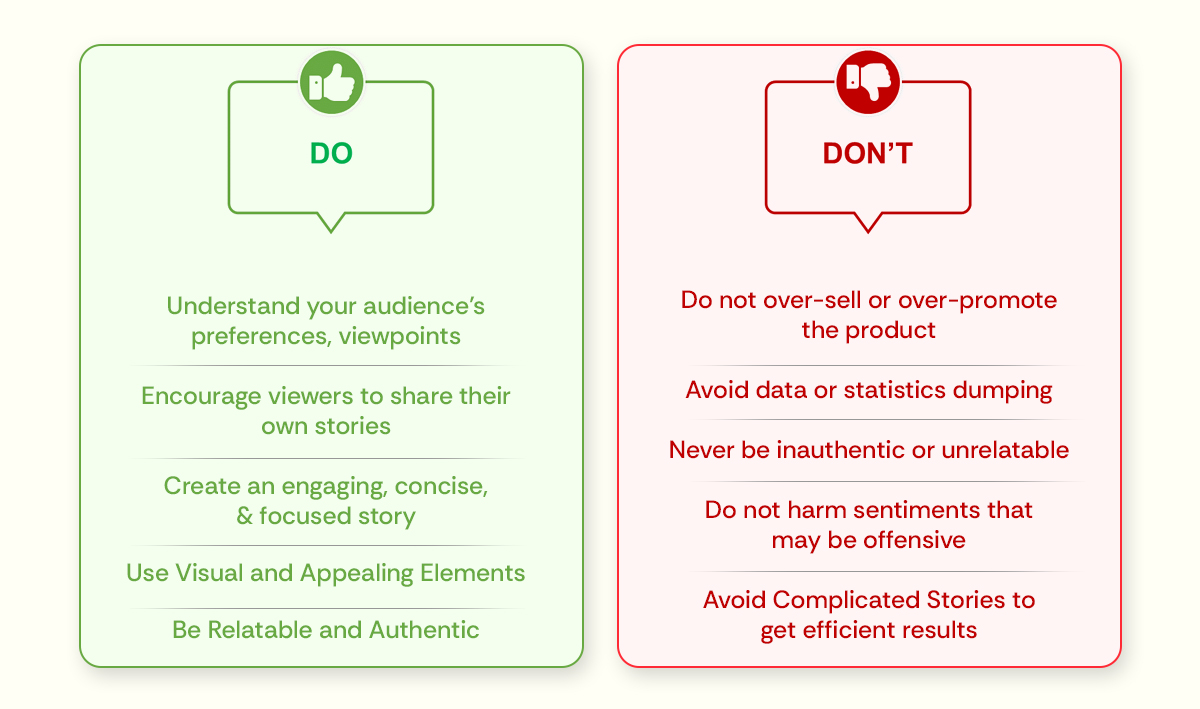
Conclusion
Brand awareness through basic information is not enough. People will connect with your business if it focuses on stories with an emotional touch. Storytelling in Business will work wonders if you focus on creating relatable tales with the right marketing strategies.
Want to know how to engage your audience with stories that resonate? Contact Digital Guider today!
Frequently Asked Questions (FAQs)
- What role does digital media play in storytelling in marketing?
Digital media provides a platform for the stories to be shared with people. Social media, blogs, videos, and podcasts are channels for sharing narrative content. - What is not effective during storytelling?
Repetitive stories can lose their appeal. Without changes or new elements, they may feel dull and fail to engage viewers. - What is a soft sale storytelling strategy?
A soft-sale technique is sharing a story about your product or services, focusing on the benefits of your product. - What are the disadvantages of storytelling in marketing?
Storytelling in marketing can backfire if done poorly, risking misinterpretation or confusion that may harm the brand’s reputation. - Can small businesses use storytelling techniques?
Absolutely! Small businesses can use storytelling to highlight their unique journey or customer success stories. - Which is the best form to publish storytelling in marketing?
Storytelling can be in the form of a blog or a video, as visual elements are easily memorable for a long time. - How does storytelling marketing differ from traditional marketing?
Storytelling marketing focuses on emotional connections, while traditional marketing focuses on product features and benefits. - Are there negative impacts of storytelling marketing?
Yes, storytelling may create harmful stereotypes, which can negatively affect the brand’s image. - What problem does storytelling solve?
Storytelling converts complex ideas into simpler and understandable forms. - How do you master Content Marketing Storytelling?
Always put your audience first, take them on an emotional journey, and test your ideas. Check if the ideas work or not or what errors need to be rectified.
